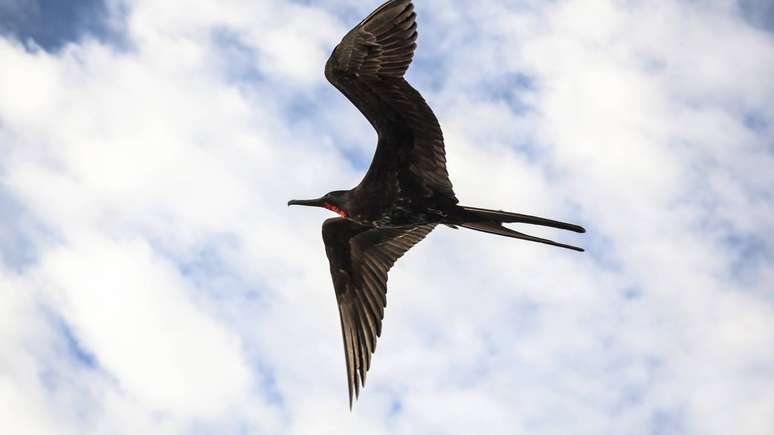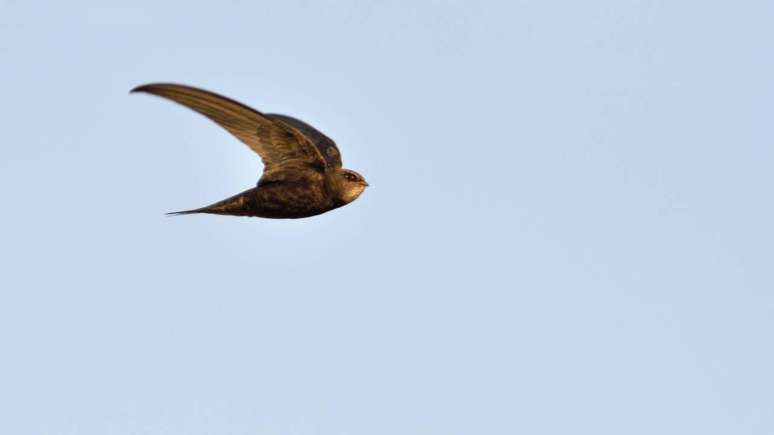Different bird species display curious and adaptive behaviors along their migratory routes or during long journeys. Among these behaviors, the ability of some birds to rest while continuing to fly stands out. This phenomenon, often associated with seabirds and long-distance migrants, arouses the interest of specialists as it is a […]
Different bird species display curious and adaptive behaviors along their migratory routes or during long journeys. Among these behaviors, the ability of some birds to rest while continuing to fly stands out. This phenomenon, often associated with seabirds and long-distance migrants, arouses the interest of specialists as it constitutes an impressive example of evolutionary adaptation.
This mechanism is not observed in all species, but in selected groups of birds that undertake air journeys that can exceed thousands of kilometers, often crossing oceans or desert regions. Birds that perform such feats must balance the need for rest with the risk of predators, the search for food and the physiological demands of continuous flight.
How do birds sleep while flying?
Scientific studies indicate that some species are capable of entering a state called unihemispheric sleep. In this process, only half of the brain goes to rest, while the other half remains alert enough to control its wings and monitor environmental hazards. This feature allows birds to stay oriented and, at the same time, keep part of their brain functions active.
The Arctic vagrant (Calonectris diomedea), for example, can spend days in continuous flight and alternating phases of micro-sleeps exploiting this mechanism. Unihemispheric sleep had already been observed in some species of aquatic mammals, such as dolphins, but in birds this ability is essential to survive in hostile environments, especially during long migrations.
Which bird species have this ability?
Some birds are better known for sleeping while flying, especially those known for their long-distance travel. Among the most cited are the albatrossthat as they cross vast oceans, they can rest without disembarking for days. You swifts and frigate birds also show similar behavior, remaining in flight for long periods. These birds have become the subject of numerous ethology and neurology studies thanks to this ability.
- Albatross: Known for crossing large stretches of sea without touching land.
- Swifts: They spend months in the air during migration and are only able to interrupt their flight to quickly feed.
- Frigatebirds: although they are not excellent swimmers, they master aerial sleep to continue flying in tropical regions.
The occurrence of this phenomenon is not limited to seabirds alone. Some speculation points to the possibility that other migratory birds adopt similar resting patterns, but further studies are still needed to confirm this.
What benefits and challenges does this behavior bring?
The fact that some birds sleep in flight brings obvious advantages and some considerable challenges. Among the advantages, the possibility for these animals to avoid predators and terrestrial obstacles stands out, as well as the optimization of travel times in search of food, partners or environments more suited to seasonal needs.
- Migration efficiency: By sleeping mid-flight, birds can cover longer distances without interruption.
- Risk reduction: sleeping off the ground decreases exposure to predators.
- Energy maintenance: Partial rest provides some level of physiological recovery, even in adverse conditions.
Among the challenges are the limitation of deep sleep and the potential accumulation of fatigue, which require compensatory strategies when the birds finally land. Furthermore, any disorientation during sleep can pose risks to physical integrity, especially in unfavorable weather conditions.

How does understanding this phenomenon contribute to science?
Studying the ability of some birds to sleep during flight offers relevant information for the fields of neuroscience, animal behavior and physiology. Analyzing the sleep patterns of these birds allows us to better understand how different species adapt their biological functions to environmental demands, as well as broadening knowledge about rest limitations in high-performance animals.
This knowledge also informs research on human sleep, especially in professions or conditions that require prolonged wakefulness, reinforcing the value of evolutionary adaptations found in nature. Following the particularities of this phenomenon, researchers continue to explore new technologies, such as miniature sensors and monitoring equipment, to discover more curiosities about the universe of migratory birds.
Source: Terra
Ben Stock is a lifestyle journalist and author at Gossipify. He writes about topics such as health, wellness, travel, food and home decor. He provides practical advice and inspiration to improve well-being, keeps readers up to date with latest lifestyle news and trends, known for his engaging writing style, in-depth analysis and unique perspectives.








